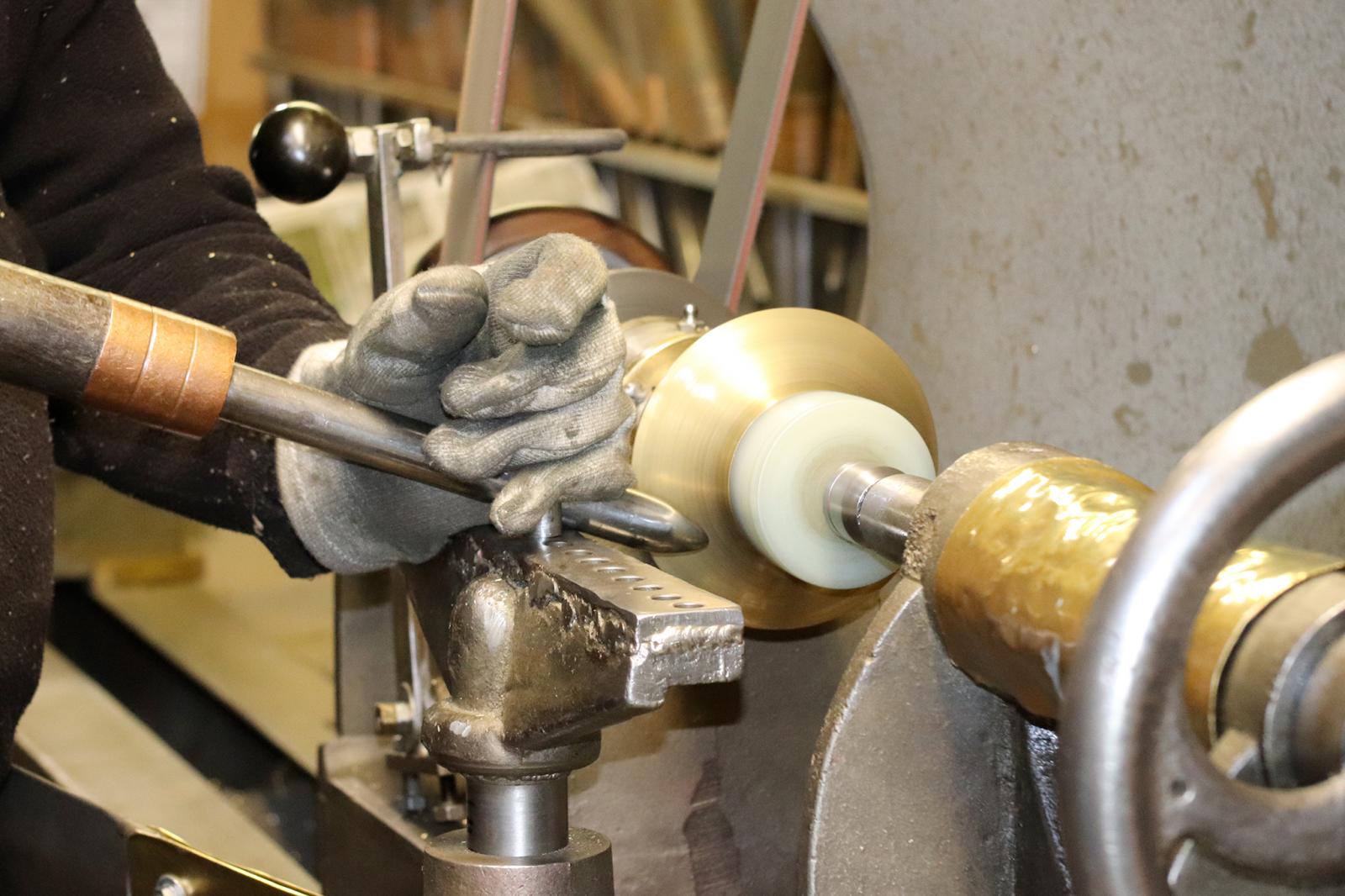Repousse work
A unique metal
All lamps are made of brass, a copper-based alloy, ideal for creating the most beautiful metal objects. Since the Bronze Age, this yellow metal has never ceased to fascinate, not only because of its color, but also because of the subtlety of its transformation and the variety of applications it offers. It is an added value in itself.
The experience of our employees has taught us a love and passion for this metal, and each element of a luminaire is made by hand. The whole company shares the traditional values that transform and embellish this metal: from cutting to threading, from turning to tapping, from embossing to welding, from patina to any other finish. Each step gives our lighting fixtures a precision and "top of the range" quality, far superior to any other "industrial" production.
Values and skills that we hold dear
People are at the heart of our company. The work in our workshops is traditional and conventional. The irreplaceable hands, the techniques learned by the elders and passed on to the young, and the skill of our faithful employees, sublimate all materials with respect. This is reflected in the quality and precision of each of our creations.
Each component of our lighting fixtures is designed and manufactured by our craftsmen. It is a collection they are very proud of. This gives them a lot of pride and motivation.

Repousse work practice on a manual lathe
Brass repousse work
One of their skills is brass repousse work. This practice is very old. Carried out on a lathe, similar in appearance to a wood turning lathe, brass embossing consists of progressively deforming a sheet metal disc a few tenths of a millimetre thick to fit the shape of a mandrel that is wedged against the disc. The chuck is a solid tool placed on the lathe and has the exact shape of the part to be obtained.

Repousse work of a brass disc using a round-ended tool
Once the lathe is running, the craftsman applies pressure on the disc to deform it, in a back and forth movement, with a tool with a rounded end, resting on a stop placed in front of the lathe. To deform the metal, the craftsman needs a lot of strength, which he draws from his arm muscles. He manages to increase his thrust and keep his balance by pushing his whole body on a large leather strap placed on his back and attached to his machine.

The craftsman needs a lot of force to deform the disc
When the brass deforms, the spinning causes the metal to harden. The metal then has to be annealed to make its mechanical properties softer again. Annealing is achieved by raising the temperature of the metal to 850°C with a propane gas torch. For large parts, several intermediate anneals are necessary to repousse the brass.

An intermediate annealing at 850°C
You can discover this technique in the video shot in our workshops and online on our homepage.
